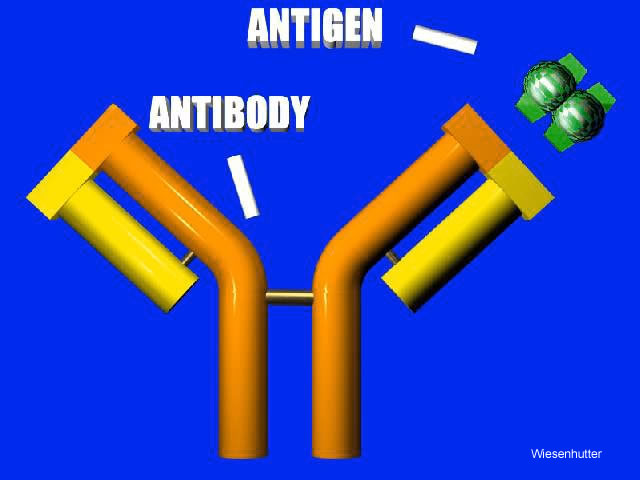U.C.L.A. Rheumatology Pathophysiology of Disease Course Lecture,
Second Year Medical School 1997

Figure 1. Antibody and antigen combine to form immune complexes (IC). This interaction is specific in that only one antibody is capable of binding to only one antigen. In the normal immune response, IC formation markedly amplifies the immune response with one of the most potent effects resulting from complement consumption. Complement consumption by IC directs polymorphonuclear leukocytes (PMN's) to the site of infection by a process called chemotaxis. Once there, the PMN's can destroy the invading organisms by phagocytosis. Complement activation at the site can also destroy the organism directly by means of the membrane attack complex.
In autoimmune disease, the abnormal formation of IC leads to the development of this inflammatory response in otherwise normal tissue. The activation of complement, and accumulation of PMN's in these areas, such as the kidney, leads to the injury of tissue, and the resulting clinical manifestations of disease. 640 x 480 pixels 35kbs